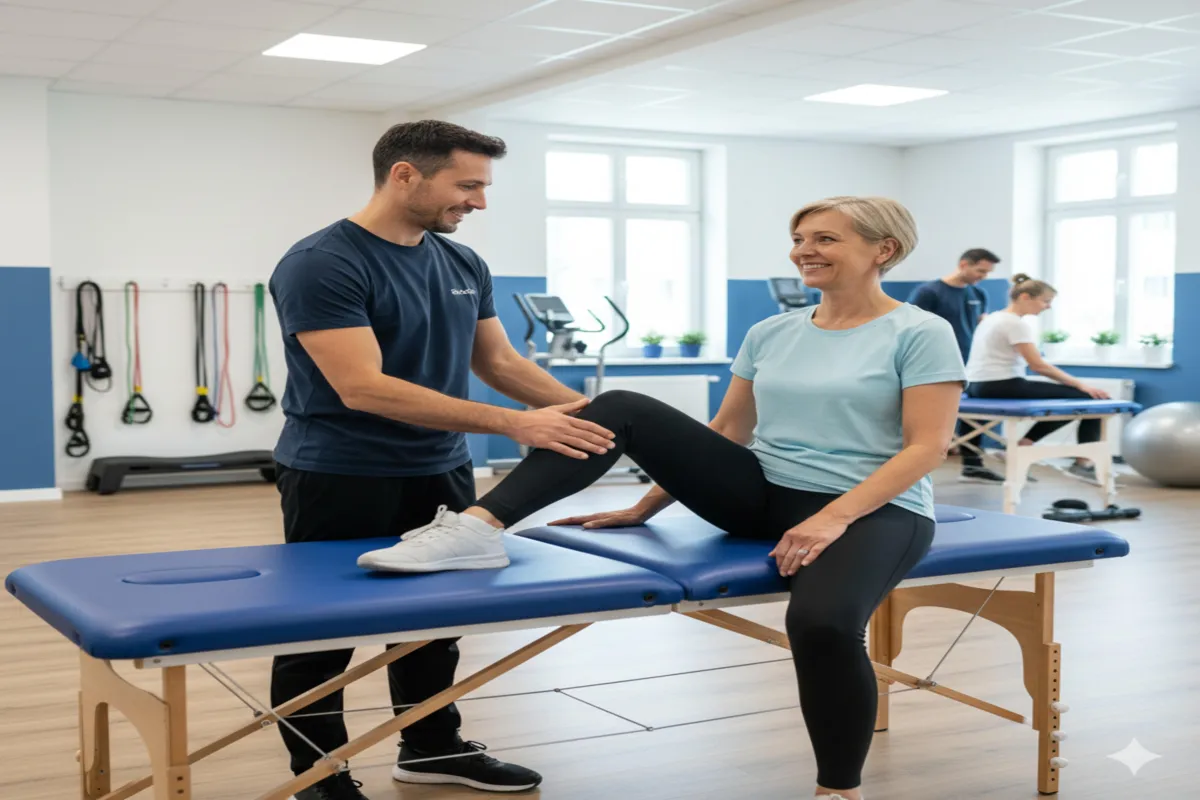
The Science Behind Physical Therapy: Healing Through Movement
Pain, stiffness, or limited mobility can interfere with every aspect of life — from simple daily tasks to doing what you love most. For decades, physical therapy (PT) has been at the forefront of helping people recover from injuries, manage chronic conditions, and regain independence.
But what makes physical therapy so effective? The answer lies in the science of movement — how your muscles, joints, and nervous system work together to heal, strengthen, and restore function.
At NJ Rehab Experts, our approach to physical therapy goes beyond exercises — it’s about understanding the body’s biomechanics and using evidence-based techniques to activate natural healing.
Understanding the Science Behind Physical Therapy
Physical therapy is built on a foundation of anatomy, physiology, neuroscience, and biomechanics. It’s not just about relieving pain — it’s about retraining the body to move efficiently and safely again.
Here’s how it works:
Neuroplasticity: Your brain and nervous system can adapt to new movement patterns. PT helps “reprogram” these pathways after injury or pain.
Muscle Activation: Targeted exercises strengthen weak or inactive muscles, restoring balance and function.
Joint Mobility: Manual therapy and stretching improve range of motion, reducing stiffness and discomfort.
Circulation & Healing: Physical activity increases blood flow, bringing oxygen and nutrients to damaged tissues for faster recovery.
Essentially, movement is medicine — and physical therapists are the experts who prescribe it.
How Physical Therapy Promotes Healing
1. Restoring Movement Through Targeted Exercise
Every movement has a purpose in physical therapy. Your therapist carefully selects exercises that activate specific muscle groups to rebuild strength and flexibility.
These exercises help:
Improve coordination and stability
Strengthen weak muscles
Prevent compensatory movement patterns
Support long-term joint health
By retraining the body to move correctly, physical therapy not only relieves pain but prevents it from coming back.
2. Reducing Pain Without Medication
Physical therapy offers a drug-free approach to pain management. Techniques such as manual therapy, dry needling, electrical stimulation, and ultrasound help reduce inflammation, improve circulation, and calm overactive pain signals in the nervous system.
For many patients, this means reducing or eliminating their dependence on painkillers — a major step toward sustainable recovery.
3. Enhancing Circulation and Tissue Healing
When you move, your body pumps more oxygen-rich blood to injured tissues. This stimulates the repair process, helps remove toxins, and speeds up healing.
Physical therapists use methods like soft tissue mobilization, stretching, and low-impact exercises to promote optimal circulation and tissue recovery.
4. Improving Balance and Coordination
Balance issues are often caused by muscle weakness, nerve dysfunction, or inner ear conditions. PT incorporates proprioceptive training — exercises that strengthen your body’s awareness of movement and position — to reduce the risk of falls and enhance coordination.
This is especially beneficial for older adults, athletes, and post-surgical patients.
5. Preventing Future Injuries
Physical therapy isn’t just about recovery — it’s about prevention.
By identifying muscle imbalances, poor posture, or faulty movement patterns, therapists can teach patients how to move more efficiently and avoid re-injury.
At NJ Rehab Experts, we empower patients with personalized home exercise programs to maintain their strength and mobility long after therapy ends.
The Role of Physical Therapy in Different Conditions
Physical therapy can benefit almost anyone — from post-surgical patients to those managing chronic pain or sports injuries.
Some common conditions we treat include:
Lower back pain & sciatica
Neck and shoulder stiffness
Knee, hip, and joint pain
Arthritis and degenerative conditions
Post-operative rehabilitation
Neurological disorders (stroke, Parkinson’s, etc.)
Sports injuries and overuse conditions
Each condition requires a tailored approach — one that combines manual therapy, exercise, and education for lasting results.
How Physical Therapy Supports Mental Health
The science of physical therapy isn’t limited to the body — it also benefits the mind.
Regular movement releases endorphins, your body’s natural mood boosters. It also reduces stress, anxiety, and fatigue that often accompany chronic pain.
Patients who participate in physical therapy often report:
Better sleep
Reduced anxiety
Increased confidence in movement
A stronger sense of control over their recovery
Physical therapy empowers you to take an active role in your health — and that’s one of the most powerful forms of healing.

Why Choose NJ Rehab Experts for Physical Therapy
At NJ Rehab Experts, our team of licensed physical therapists combines advanced clinical techniques with compassionate care to help you move better and live pain-free.
We provide:
Customized rehabilitation plans for every individual
Evidence-based treatments such as dry needling, manual therapy, and sports rehab
Patient education for long-term wellness
A comfortable, supportive environment for healing
Whether you’re recovering from surgery, dealing with chronic pain, or seeking to improve performance, we’re here to help you every step of the way.
Learn more and book your consultation: https://njrehabexperts.com/
Call us today: (212) 227-3233
